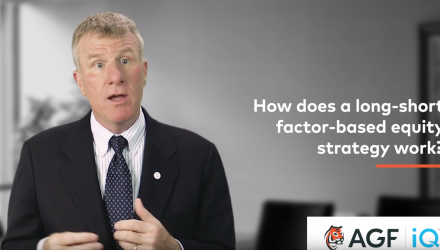When it comes to the potential advantage of using a long/short structure to provide uncorrelated returns in a portfolio, Bill DeRoche of AGFiQ knows the benefits first hand.
DeRoche said AGFiQ goes over the correlation during adverse events as a means to help. This approach means seeing if it works when needed, creating a level of expectations when having to rely on alternatives.
“Is that correlation different when markets are up, or is it different when markets are down,” DeRoche said, adding this is an essential determination to understand when the markets are down.
In discussing how a long-short factor-based equity strategy works, DeRoche explained how AGFiQ can tilt towards stocks that are smaller, good quality, less expensive, and have better momentum and lower volatility. Through that method, those are the stocks they want to be overweight or long. On the opposite end, with the larger cap names, those are the ones they want to be underweight or short.
Different types of long/short structures
Better understanding what’s at play here, DeRoche also explained the different types of long/short structures.
“It could be equal and offsetting, so at the end of the day, the beta of the portfolio will effectively be zero. That would be more of a market-neutral solution,” as one possibility.
Or, as DeRoche continues, they could go long/short where the long exposure is a bit higher than the short, allowing them to tailor to how much equity exposure is wanted in the overall portfolio.
Related: When Stocks Tumble, Look To AGFiQ Market Neutrality ETF
Moving on to how an investor decides what structures are best, DeRoche described how collecting all of those premiums can be turned into a long/short portfolio. In doing that, an investor will have some equity beta exposure, as well as exposure to the other risk premiums the company put a tilt towards, as explained earlier.
That in mind, if a core beta portfolio already exists and the plan is to enhance it by adding other risk premiums, then a more market-neutral solution is what needs to happen, as the beta component is already present.
“For us, it’s a question of working with a client and understanding where they are and where does this fit into the portfolio,” DeRoche said.
Watch Bill DeRoche discuss the different types of long/short structures:
For more alternative ETF investing strategies, visit our Alternatives Channel.








